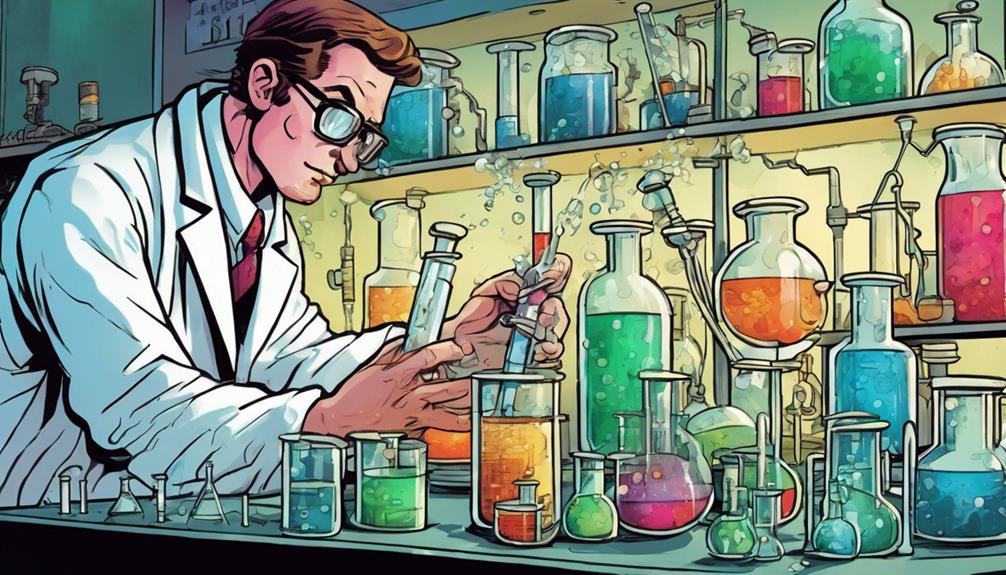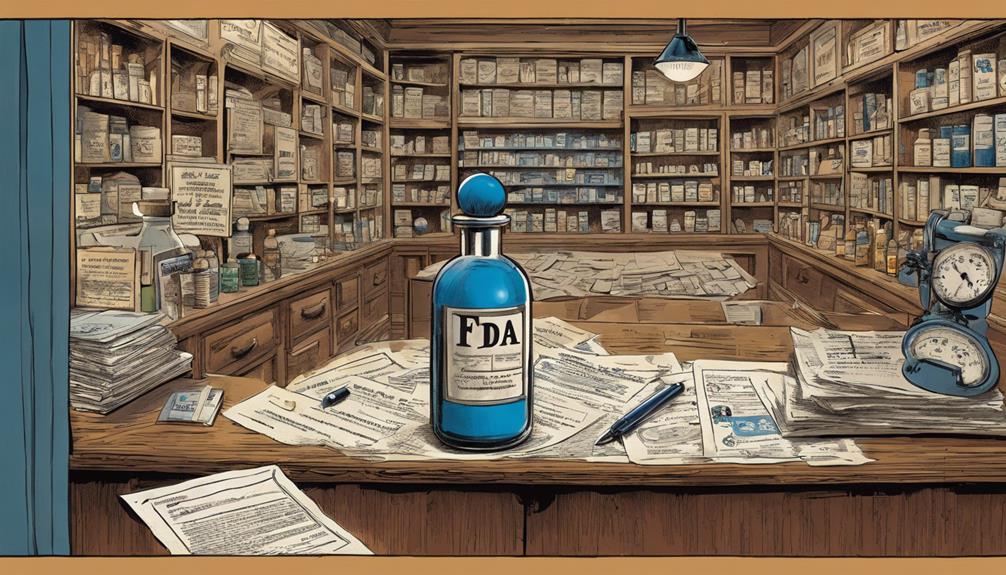Viagra, surprisingly, started as a medication aimed at treating high blood pressure and angina. Developed by Pfizer chemists in the mid-1980s, it didn't perform well for its original purpose. But during trials, researchers noticed its significant effect on erectile tissue and blood flow. By the early 1990s, clinical trials focused on erectile dysfunction, proving its effectiveness. The FDA approved Viagra in March 1998, making it the first drug specifically for impotence. Its rapid success sparked conversations about male sexual health and inspired competitors. This unexpected journey reveals much more about Viagra's cultural impact and healthcare evolution.
Key Takeaways
- Sildenafil citrate, initially developed to treat high blood pressure and angina, unexpectedly showed significant effects on erectile tissue during trials.
- Clinical trials in the early 1990s revealed sildenafil's efficacy for erectile dysfunction, enrolling around 3,000 patients in diverse settings.
- The FDA approved sildenafil on March 27, 1998, making it the first drug specifically designed to treat impotence.
- Viagra quickly gained popularity, filling 40,000 prescriptions within weeks and surpassing $1 billion in annual sales by 2001.
Development of Sildenafil Citrate

In the mid-1980s, Pfizer chemists Albert Wood and Peter Dunn set out to develop sildenafil citrate as a treatment for high blood pressure and angina, unknowingly paving the way for a medical revolution.
Their initial goal was to create a drug that could improve cardiovascular health, but early tests revealed disappointing results in that area.
However, during trials, you'd notice something unexpected: sildenafil showed significant effects on erectile tissue and blood flow.
This unexpected outcome led to a shift in focus, as researchers began to explore its potential for treating erectile dysfunction.
With around 3,000 patients involved in testing, sildenafil demonstrated effectiveness across multiple trials, ultimately laying the groundwork for what would become Viagra, a groundbreaking treatment for impotence.
Initial Clinical Trials

Following the unexpected discovery of sildenafil's effects on erectile tissue, initial clinical trials began in the early 1990s to further investigate its potential as a treatment for erectile dysfunction. Researchers aimed to assess efficacy, safety, and dosage, enrolling around 3,000 patients aged 19 to 87.
Key aspects of these trials included:
- Focus on patients with varying degrees of erectile dysfunction
- Evaluation of side effects and overall health impact
- Comparison with placebo to establish efficacy
- Diverse settings across multiple countries, primarily in Britain
These trials ultimately paved the way for a groundbreaking shift in addressing erectile dysfunction, revealing sildenafil's true potential beyond its original cardiovascular purpose.
Breakthrough FDA Approval

The groundbreaking FDA approval of sildenafil on March 27, 1998, marked a pivotal moment in the treatment of erectile dysfunction, transforming not only the pharmaceutical landscape but also the lives of millions.
You mightn't realize it, but this approval was the first of its kind for a drug specifically designed to treat impotence. Following extensive clinical trials that showcased sildenafil's effectiveness, it quickly became a beacon of hope for men struggling with this condition.
The approval not only validated years of research but also opened the door for further advancements in sexual health. With its introduction, you witnessed a shift in societal attitudes, embracing open discussions about male sexual wellness and the importance of addressing such issues without stigma.
Record-Breaking Market Demand

Almost immediately after its launch, Viagra experienced an unprecedented surge in market demand, filling 40,000 prescriptions within just a few weeks. This explosive interest made it the largest drug launch in history, and you could see why:
- Annual sales surpassed $1 billion by 2001.
- It was labeled the 'hottest new drug' globally.
- Competitors like Levitra and Cialis quickly emerged.
- Even nearly 18 years later, it remains a top-selling prescription drug.
With its price ranging from $34 to $40 per pill, many people sought it out, driving a multi-billion dollar erectile dysfunction industry.
Viagra's impact on the market was nothing short of remarkable.
Cultural Impact on Society

Transforming perceptions of male sexuality, Viagra has sparked essential discussions about masculinity and sexual health in contemporary society. It's not just a pill; it's a cultural phenomenon that challenges traditional views of male virility. You might find it interesting how its introduction has influenced conversations around intimacy, aging, and sexual wellness.
| Impact | Implications |
|---|---|
| Redefined masculinity | Encourages open dialogue on male health |
| Increased visibility | Normalizes erectile dysfunction discussions |
| Rise of alternatives | Promotes exploration of sexual wellness products |
Viagra's cultural significance reflects a shift towards a more open understanding of male sexual health, making it a pivotal topic in modern conversations about intimacy.
Competitors and Industry Landscape

Viagra's cultural impact has opened the door for competitors to enter the erectile dysfunction market, reshaping the industry landscape considerably.
As new players emerged, the competition heated up, leading to a variety of options for consumers. You'll find several alternatives that cater to different needs and preferences, including:
- Levitra, known for its rapid onset.
- Cialis, celebrated for its long-lasting effects.
- Stendra, which offers a quick action time.
- Generic sildenafil, providing a more affordable choice.
These competitors haven't only diversified consumer choices but also spurred ongoing innovation within the industry, making it more dynamic and responsive to customer demands.
Ongoing Influence on Health

Often regarded as a game-changer in men's health, Viagra continues to greatly influence discussions around erectile dysfunction and sexual wellness. Its introduction not only transformed treatment options but also sparked critical conversations about male sexual health, challenging societal taboos.
You might find that Viagra's impact extends beyond the pharmacy; it encourages men to prioritize their health and seek help rather than suffer in silence. The drug's success has also led to increased awareness of related conditions, fostering a more open dialogue about intimacy and aging.
Additionally, ongoing research into its effects has paved the way for innovative treatments, ensuring that men can lead healthier, more fulfilling lives. Viagra's legacy is a continuous push for better health and well-being.
Conclusion
In the grand tapestry of medicine, Viagra's journey from a humble heart pill to a beacon of intimacy highlights how unexpected discoveries can reshape lives.
It's more than just a little blue pill; it's a key that opens doors to connections, sparking conversations about vigor and masculinity.
As it continues to influence health and relationships, Viagra reminds us that sometimes, the most surprising paths lead to the most profound changes in our intimate lives. In addition to its impact on individuals, Viagra has also had a significant effect on the pharmaceutical industry. The tremendous success of the drug has led to increased competition and a notable production volume variance among manufacturers. This has resulted in a wide range of options for consumers, as well as a greater accessibility to the medication.









